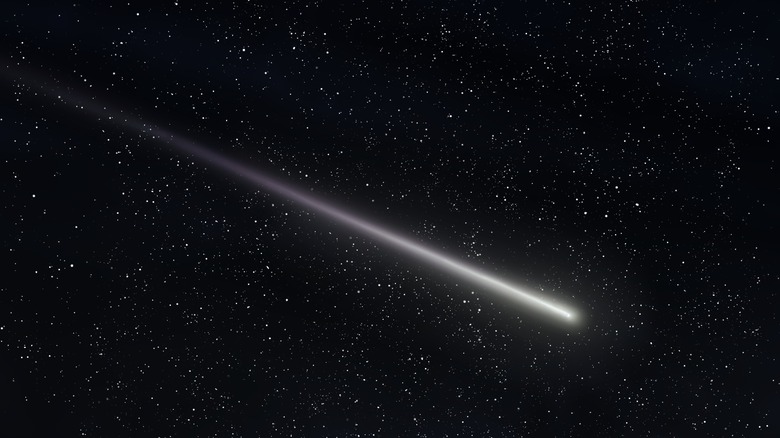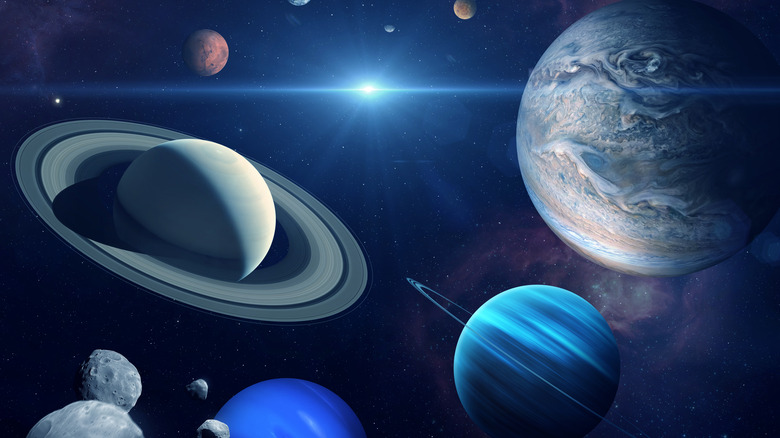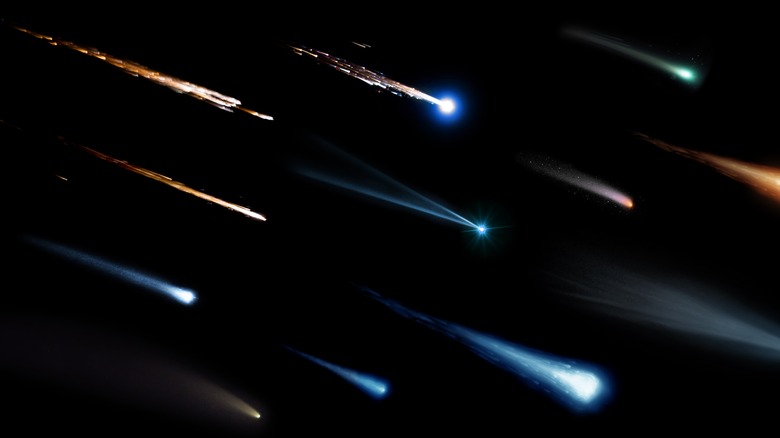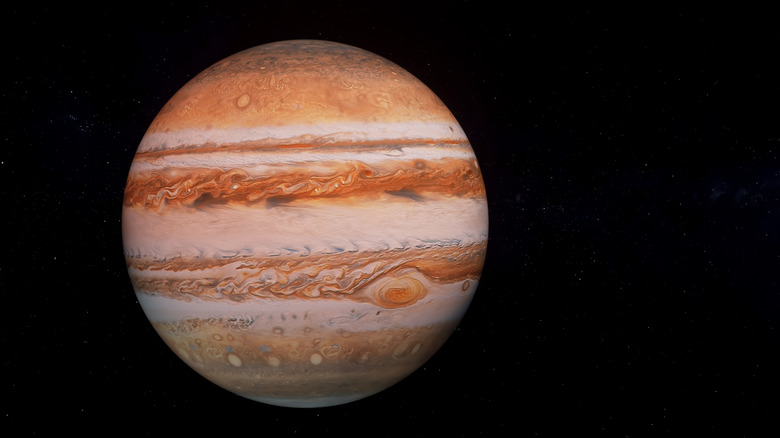A Small Meteorite Points To An Alternate Theory Of The Formation Of The Universe
Typically, we think of meteors as enormous, catastrophic, terrifying things. Super powerful magical attacks in video games, that sort of thing. The fact of the matter is, we're quite vulnerable floating here on this Earth of ours, and any vast celestial hunks of rock that might approach us are cause for major concern.
These celestial hunks, however, aren't all one and the same. Meteors and asteroids, like stalagmites and stalactites, are often considered the same thing. This isn't the case, though. As NASA explains, a meteoroid is a fragment of an asteroid, detached from the latter vast piece of space-rock. A meteor, meanwhile, is a meteoroid that has reached the planet's atmosphere, burning up in a spectacle that (if we're lucky) occurs en masse in a stunning meteor shower.
There will, naturally, be lots and lots of these, all an assortment of different shapes and sizes. NASA reports that the solar system is home to around 1.1 million asteroids, and that they are higgledy-piggledy debris. The scrap of a cosmic building site, if you will. Curiously, it seems that one of the very smallest pieces of one of them could provide another insight into the origins of the solar system.
A scientifically-scintillating shooting star
According to Space.com, the Big Bang Theory states that the universe as we know it today expanded from one tiny point 13.7 billion years ago. This moment saw expansion at an electrifying pace, and the formation of all that would eventually become our planets, asteroids, meteors, stars, Hot Pockets, and everything in between.
Inconveniently, there are no astronomers, physicists, mathematicians, or other brilliant minds that are billions of years old whom we could ask about how it happened. What we must do, then, is model our beliefs about what happened, and how and when it happened, on the insight we have been able to glean. In this wide and fascinating field, seemingly small events and discoveries can rewrite history. Or, more accurately, what we know or believe about it.
In February 2021, per Live Science, a tiny meteoroid that burned up over Alberta did exactly this. No larger than a grapefruit, this visitor from the distant and enigmatic Oort Cloud was like nothing that is known to have originated from there before. Here's why this small (in the grand celestial scheme of things) encounter has proven so significant.
The mysterious Oort Cloud
The Oort Cloud, according to BBC Sky At Night Magazine, is a sort of ring of numerous (estimates reach the trillions) tiny pieces, largely of frozen gas. It's a distant, icy, inhospitable realm, and an incredibly distant one at that: the outlet reports that it's about a light year away from the sun (which is 6 trillion miles or 9 trillion kilometers, according to NASA) at its closest point.
As preposterously far away as it is, the magazine goes on, the Oort Cloud remains technically theoretical: no existing technology can get close enough to actually detect it. However, the icy comets that come close enough to be noticed must come from somewhere, and a sort of distant, vast storage locker at the far reaches of the solar system explains that away nicely.
The study "Direct measurement of decimetre-sized rocky material in the Oort Cloud" from Denis Vida et al (published in Nature in December 2021), however, discusses something that doesn't fit neatly into astronomers' knowledge of the solar system. "The Oort cloud is thought to be a reservoir of icy planetesimals and the source of long-period comets," the study begins. Per Live Science, though, the meteoroid of February 2021 was a little rocky specimen that burnt up in a fireball. The Oort Cloud, from which this meteoroid seemed to originate, is believed to consist of small icy pieces, which would not have done so. It seems we can learn a lot about this plucky little space-grapefruit that could.
A seemingly impossible fireball
Per Western News, it was previously believed that only icy debris existed in the distant reaches of the Oort Cloud. Curtin University's Hadrien Devillepoix, the outlet reports, is a significant figure in the Global Fireball Observatory. Regarding this intellectual alliance of sorts, which closely studies the skies and collaborates with scientists around the world, Devillepoix stated, "It not only allows us to find and study precious meteorites, but it is the only way to have a chance of catching these rarer events that are essential to understanding our Solar System."
This small Alberta fireball was certainly that. Devillepoix went so far as to say, "In 70 years of regular fireball observations, this is one of the most peculiar ever recorded." It burned up as a rocky intruder would, and survived just as long in our atmosphere too. There's little doubt, it seems, that it was composed of rock, and its flight path to get here left its distant origins quite clear too. In short, it now seems certain that the Oort Cloud is home to both rocky and icy pieces.
This, in itself, may not sound particularly intriguing, but it suggests very different origins for some of the major players in the solar system. According to "Direct measurement of decimetre-sized rocky material in the Oort Cloud" from Denis Vida et al (via Nature), around one in every hundred of the Oort Cloud's teeny pieces could be made of rock. This would point towards a renewed consideration for the Grand Tack theory of the solar system's creation.
The Grand Tack theory
In August 2011, the Southwest Research Institute's Kevin Walsh explained this hypothesis. Walsh stated, per NASA, "We refer to Jupiter's path as the Grand Tack, because the big theme in this work is Jupiter migrating toward the sun and then stopping, turning around, and migrating back outward." Live Science reports that Jupiter's fellow gas giant, Saturn, influenced each other's movements through the effects of their gravity, moving them into the depths of space. This effect may have also resulted in more distant rocky objects in what we now deem the Oort Cloud, NASA goes on, as the gravitational effects of the approach of such an influential body could have prevented them from forming together.
With the detection of this small grapefruit of a meteor, then, the possibility of the Grand Tack is given an awful lot of credence. It is yet another discovery to focus future research upon, and which may very well shape our understanding of how we and the rest of the solar system came about accordingly.




